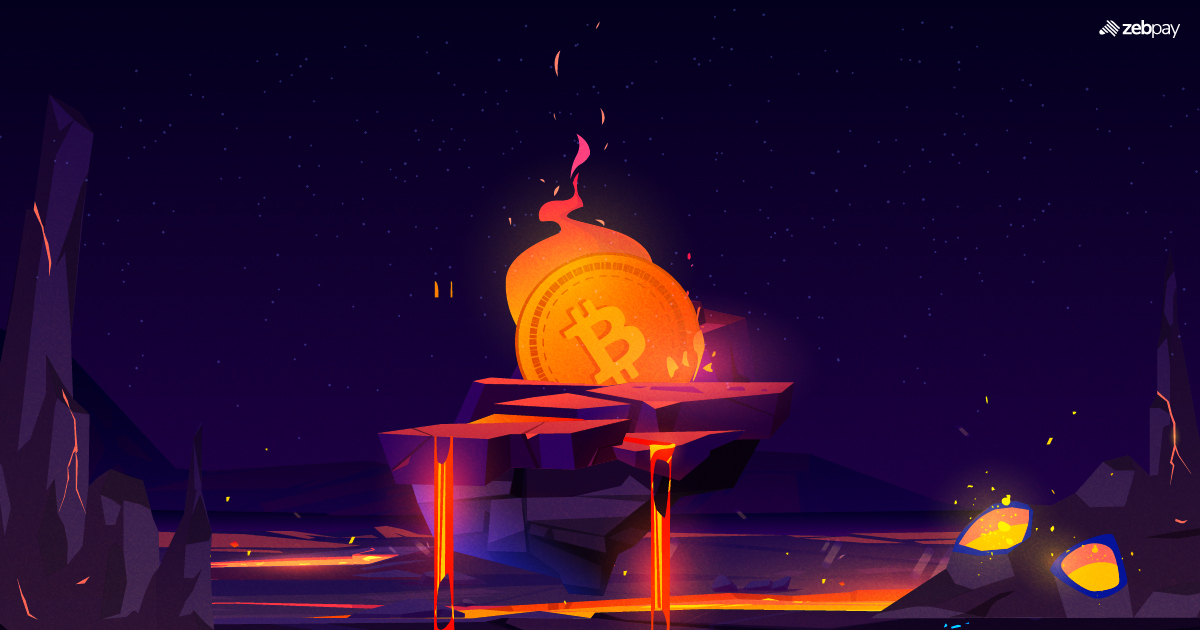You may have seen crypto coins launching with billions of tokens. Each of these tokens sell for fractions of a fiat because of the high supply. How do such cryptos increase their price to make them a more attractive investment? This is where coin burning comes in. Burning crypto coins means taking tokens out of circulation to reduce their number. This has a variety of benefits for the ecosystem.
How Do Crypto Coins Get Burned?
Every crypto account is associated with an address. This address is used to send and receive coins, as it allows the system to recognise you.
Once created, crypto coins cannot be destroyed. This is why accounts are essential to crypto burning. Blockchains can have addresses that cannot send tokens but only receive them. Once a coin is sent to that account, it is forever out of circulation as the address cannot send it back into the market. Thus, sending coins to an address that can only receive coins is known as coin burning.
These “eater” or “burner” accounts are not assigned to anyone and do not have a private key. No one can access the burner account. This is an essential security measure to ensure that burned coins are permanently inaccessible.
Why Are Coins Burned?
If you have ever invested in stocks before, you may be familiar with the concept behind coin burning. It is similar to stock buybacks practised by publicly traded companies.
When a company buys back stocks, it reduces the number of shares in circulation. This is intended to increase the value of shares in the market. It also benefits companies by giving them more control, allowing them to gain a majority over other investors.
Similarly, coin burning has some of the same functions. Reducing the supply of tokens usually increases the value of the remaining tokens. This can also be used to control or maintain inflation in the blockchain.
Tokens are usually not burned by individuals as it only reduces their assets. Instead, it is the developers and managers of crypto platforms that burn tokens. Unlike individuals, the developers have a responsibility to maintain the crypto ecosystem rather than simply increasing their own wealth.
Proof-Of-Burn: A New Approach to Consensus
Another practical application of coin burning is a consensus mechanism. A consensus mechanism on a blockchain is used to confirm the validity of transactions.
Proof-of-burn operates on the principle of burning tokens to mine more. Under this system, crypto miners burn tokens that they own. This grants them the right to mine new blocks of transactions in proportion to the tokens burned. In return, the miners earn rewards in the native token of the blockchain.
Depending on the system used, a blockchain may require you to burn the native token or an alternative token from another chain. Regardless of the token burned, rewards are received in the native token of the blockchain.
Proof-of-burn is considered an energy-efficient alternative to the older Proof of Work system. Burning coins does not consume many resources, especially compared to the heavy computation required for Proof-of-Work.
Pros of Burning Coins
Coin burning removes tokens from circulation to create scarcity. But does coin burn increase the price? This scarcity can help the crypto rise in value. Past coin burns, as done by Binance coin, Stellar and SHIB, have helped the crypto rise to a higher price.
Second, burning also creates economic stability in the ecosystem. As coins do not have a central authority governing their distribution, there are no traditional measures to control inflation. This is where coin burning can be used to stabilise the token as a deflationary tool.
Burning also opens up the possibility of alternative consensus methods, such as the proof-of-burn mentioned above. This enables participants who do not have the computing power necessary for proof-of-work mining to participate in the blockchain and mint blocks.
Read about : Proof of Work vs Proof of Stake
Cons of Burning Coins
As mentioned above, coin burning is sometimes intended to increase the token’s price. However, this is not always the case. The effect of coin burning depends on investor confidence and sentiment. In some cases, the burning can backfire and cause the opposite effect.
Developers can also use burning as a way to trick investors. Burner addresses are not controlled by anyone and do not have a private key. But if the developers wish to deceive investors, they can claim to burn coins while sending them to an address they control. This does not reduce the circulated tokens and only increases the developer’s assets.
Finally, developers can use it to hide the size of their holding. This is done by taking a small percentage of tokens from the initial pool, but immediately burning a majority of the coins. This makes it seem like the developer has very few tokens while holding a large percentage of the coins in circulation.
Read about : Tokenization vs Encryption
Final Thoughts
Coin burning is a crucial deflationary measure for a token. It can create fantastic investment opportunities for individuals by increasing the value of their holdings. Burning also leads to new and fascinating methods of consensus on the blockchain.
However, it can fail to bring the desired outcome or even be misused. Now that you know what coin burning is, you can better examine crypto projects and determine if they are the right investment for you.
To know more visit ZebPay, Singapore’s leading Crypto exchange.

